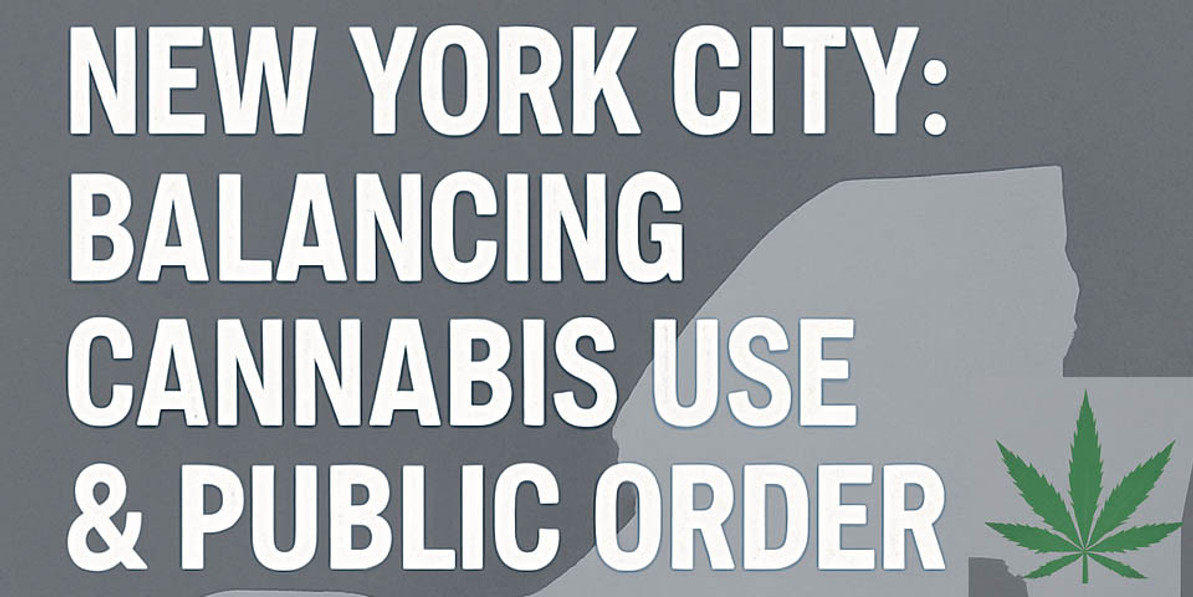New York City: Balancing Cannabis Use & Public Order
Managing the Smell and Regulation
Legal cannabis is well-established in New York City, but in 2025 the city faces a new challenge: how to balance legal consumption with public quality-of-life concerns. From pervasive odor complaints to lawsuits and policy proposals, here’s a deep dive into how New York City is navigating cannabis in public.
The Problem: Cannabis Odor and Public Space
Since adult-use legalization in 2021, cannabis smoking is allowed in the same places where tobacco smoking is permitted. However, Mayor Eric Adams recently expressed growing concern about the smell wafting across sidewalks and residential blocks. In a July 2025 interview, he remarked that the odor "should be relegated to certain areas" rather than permeating every street corner. He acknowledged supporting legal cannabis business while stressing the need for public order.
On a FOX 5 NY interview, one resident said: “If I'm walking by, it doesn't bother me… but if I’m with my daughter, then yes, it absolutely bothers me because I don't want her to be exposed.” Others pushed back: “I’m in New York City—it’s one of the better smells, to be honest.” These comments highlight how perceptions differ across the city.
Legal Framework and Regulatory Context
Under New York’s MRTA (Marihuana Regulation and Taxation Act), adults 21+ may possess up to three ounces of cannabis and vape or smoke in spots where tobacco is allowed. Critically, the law prohibits using the smell of marijuana alone as probable cause for searches.
However, Governor Kathy Hochul’s 2025 budget proposal sought to reverse that—allowing police to pull drivers over based solely on the smell of cannabis. Acting OCM Executive Director Felicia Reid condemned this as undermining the MRTA’s core principles.
Public Perspective: Message Boards and Local Voices
Discussions on local forums and Reddit reflect a polarized dialogue:
“This city is overtaken by weed smell—it's not just a few blocks, it’s everywhere.” – comment on r/NYC
“I use cannabis responsibly but I don’t want the smell to ruin public spaces for everyone else.” – user review on a local neighborhood board
Meanwhile, cannabis advocates argue that public space restrictions are unnecessary if responsible consumption norms are encouraged.
Litigation and Business Friction
Local CBD and hemp stores recently prevailed in court after state regulators and NYC law enforcement conducted warrantless raids. A judge ruled the actions violated the Fourth Amendment and issued restrictions on further inspections. Critics say enforcement has been heavy-handed and conflated CBD businesses with illicit marijuana sellers.
Separately, licensed cannabis retailers have filed lawsuits alleging the Office of Cannabis Management incorrectly allowed dispensaries to open within prohibited proximity zones—harms existing stores and undermines regulations meant to prevent oversaturation.
Health and Policy Debates Ahead
Spectrum News recently reported that rising adult cannabis use—particularly through smoking—is prompting health experts to advocate for next session limits: public usage restrictions, potency caps, and educational campaigns about smoke exposure risks for youth.
Practical Takeaways for Stakeholders
- Residents: Voice concerns through community boards; support policies that limit smoke in dense or residential zones.
- Policymakers: Consider pilot zones where smoking is allowed vs restricted areas to test impact on odor complaints.
- Cannabis retailers and lounges: Track delayed lounge licensing—officials still haven't established on-site consumption rules under the MRTA. This uncertainty is stalling planned businesses.
- Civic groups: Advocate for clear guidance about where and how public cannabis use should be managed, drawing on data and resident feedback.
Bottom Line
New York City’s cannabis policy in July 2025 is defined by its tension between legalized use and community comfort. The odor of cannabis may seem trivial—but in tight urban streets, it has become a marker of broader urban policy challenges. Residents, industry, and regulators must now work together to define responsible public use—without sacrificing legalization goals or quality-of-life standards.
*These statements have not been evaluated by the United States Food and Drug Administration.
**The beliefs and opinions expressed in this blog are not those of Waterbeds 'n' Stuff.
Want more cannabis education, news, and product tips?
Subscribe to our newsletter or follow us on social media.
Explore More:
Recent Posts
-
Ohio Lawmakers Advance Senate Bill 56: What It Means for Marijuana, Hemp & CBD Businesses in 2025
Ohio’s Marijuana & CBD Re-Bill (SB 56): What It Means for Hemp Shops, Delta-8 & Consumers Ohio law …Oct 28, 2025 -
Feds, States, Hemp & CBD — What’s the Latest Drama and Why It Matters
Ohio Hemp Ban, THC Drinks & CBD Market: What’s Going On in 2025 In 2025, the once-quiet world of h …Oct 17, 2025 -
Americans Warm to Cannabis as Safety, Taxation, and Legal Fights Intensify in 2025
Americans’ Attitudes, Safety Risks, and Legal Battles Define Cannabis Debate in 2025 The national …Oct 12, 2025




